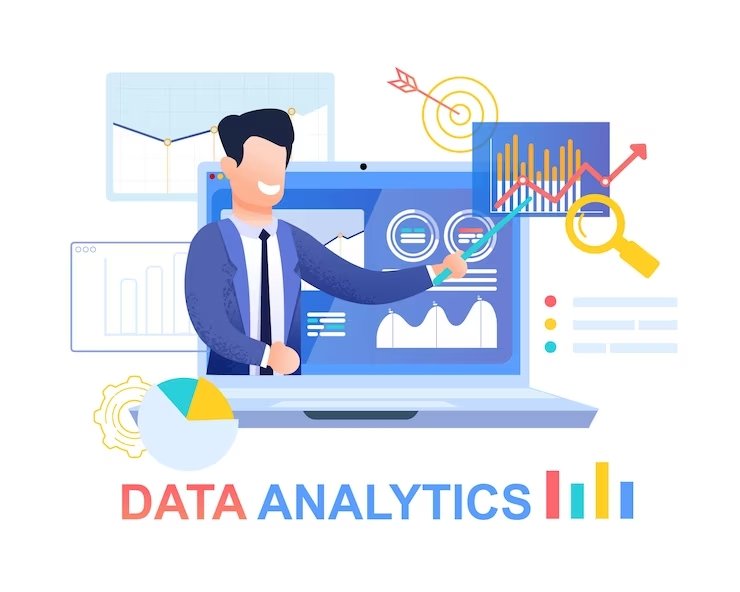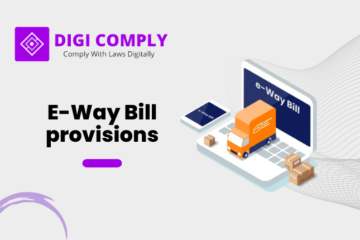In recent years, the implementation of the Goods and Services Tax (GST) in India has revolutionized the country’s taxation system, streamlining processes and promoting transparency. With the vast amount of data generated through GST filings, businesses now have an opportunity to harness this data to gain valuable insights and drive informed decision-making. In this blog post, we will delve into the world of data analytics techniques that can be employed to analyze GST data, including generating key performance indicators (KPIs), building customized reports and dashboards, and enabling ad-hoc queries and drill-down analysis.
1. Generating Insights and Key Performance Indicators (KPIs):
One of the primary objectives of data analytics techniques is to extract meaningful insights from GST data. By utilizing advanced analytics tools, businesses can unlock valuable patterns, trends, and anomalies hidden within their GST data. This analysis enables organizations to understand their customers better, optimize supply chain operations, and uncover potential revenue leakage or fraudulent activities.
To generate key performance indicators (KPIs), businesses can leverage a combination of data aggregation, data visualization, and statistical analysis techniques. These techniques allow organizations to derive critical metrics such as sales growth, customer churn rate, inventory turnover, and compliance rate from their GST data. By regularly monitoring these KPIs, businesses gain a comprehensive overview of their performance, enabling them to measure progress toward their goals and make data-driven decisions to drive growth.
2. Building Customized Reports and Dashboards:
Customized reports and dashboards serve as powerful tools for visualizing and interpreting GST data. These tools are instrumental in presenting complex information in a user-friendly and intuitive manner, enabling stakeholders to grasp insights quickly. By consolidating data from multiple sources, businesses can create comprehensive reports and interactive dashboards that provide a holistic view of their GST-related operations.
Data visualization techniques, including charts, graphs, heatmaps, and interactive maps, facilitate easy comprehension of trends and patterns in GST data. These tools can be utilized to monitor sales performance across different regions, analyze product-wise profitability, identify tax-saving opportunities, and track compliance levels. Customized reports and dashboards empower businesses to monitor real-time data, measure progress against targets, and identify areas for improvement or intervention.
3. Enabling Ad-hoc Queries and Drill-down Analysis:
Ad-hoc queries and drill-down analysis are invaluable techniques for exploring GST data at a granular level, offering deeper insights into specific transactions, customer behavior, or product performance. By leveraging data analytics tools, organizations can perform ad-hoc queries based on various parameters and filter results to extract relevant information.
By drilling down into the details of specific transactions, businesses can investigate anomalies, identify potential risks, and take corrective actions promptly. Ad-hoc queries also enable businesses to perform exploratory analysis, uncover hidden trends, and gain a comprehensive understanding of their GST data. These techniques empower decision-makers to respond swiftly to changing market dynamics, optimize business strategies, and proactively address emerging challenges.
Case Studies on Successful Implementation of Data Analytics in GST Data Analysis in India
Case Study 1: Goods and Services Tax Network (GSTN)
One of the most notable implementations of data analytics in GST data analysis in India is by the Goods and Services Tax Network (GSTN). The GSTN is a special-purpose vehicle that manages the entire IT system of the GST regime in India. It is responsible for processing and analyzing vast amounts of data related to tax filings, invoices, and transactions.
The GSTN implemented data analytics techniques to extract valuable insights from the massive amount of data it handles. By leveraging advanced analytics tools and technologies, the GSTN has been able to achieve several significant outcomes:
1. Fraud Detection and Risk Assessment: Data analytics helps in identifying suspicious patterns and anomalies in GST data, enabling the detection of potential tax evasion or fraudulent activities. By analyzing the transactional data, the GSTN can flag high-risk entities and conduct targeted audits, improving tax compliance.
2. Compliance Monitoring: Data analytics enables the GSTN to monitor compliance levels among taxpayers. It helps in identifying non-compliant taxpayers and analyzing their filing patterns to take appropriate enforcement actions. This proactive approach has resulted in increased compliance rates and reduced tax evasion.
3. Revenue Forecasting: By analyzing historical data and trends, the GSTN can develop accurate revenue forecasting models. These models assist the government in better financial planning, resource allocation, and policy decision-making.
4. Process Optimization: Data analytics helps the GSTN identify bottlenecks and inefficiencies in the tax administration process. By analyzing data on taxpayer interactions, invoice matching, and return filing, the GSTN can suggest process improvements and automation opportunities to streamline operations.
Case Study 2: State Tax Departments
Various state tax departments in India have also successfully implemented data analytics in GST data analysis. One such example is the Karnataka State Tax Department, which adopted data analytics to enhance tax administration and improve compliance rates.
The Karnataka State Tax Department utilized data analytics to achieve the following outcomes:
1. Risk-Based Audit Selection: By analyzing GST data, the tax department identified high-risk taxpayers for audit selection. The analysis involved evaluating factors such as revenue patterns, input tax credit claims, and compliance history. This approach enabled the department to focus its audit resources on entities with a higher likelihood of non-compliance, optimizing audit effectiveness.
2. Sector-Specific Analysis: Data analytics allowed the tax department to perform sector-specific analysis to identify tax evasion trends and patterns. By understanding the characteristics and behavior of taxpayers in specific sectors, the department could target enforcement efforts more effectively and reduce tax leakage.
3. Real-Time Monitoring: The tax department employed real-time data analytics to monitor key indicators of compliance, such as late filing, non-filing, and tax mismatch. This proactive monitoring helped in promptly identifying non-compliant taxpayers and taking corrective actions, thereby improving compliance rates.
4. Outreach Programs: Data analytics facilitated the identification of eligible taxpayers who were not filing returns or availing of benefits of the GST system. The tax department utilized this information to launch outreach programs and provide assistance to such taxpayers, promoting voluntary compliance.
By leveraging data analytics, state tax departments have experienced significant improvements in compliance levels, revenue collection, and overall tax administration efficiency.
These case studies highlight the successful implementation of data analytics in GST data analysis in India. By harnessing the power of data and advanced analytics techniques, the GSTN and state tax departments have been able to enhance tax compliance, detect fraud, optimize processes, and improve revenue forecasting, contributing to a more robust and effective GST system.
If You have any queries then connect with us at support@legalsuvidha.com or info@digicomply.in & contact us & stay updated with our latest blogs & articles





